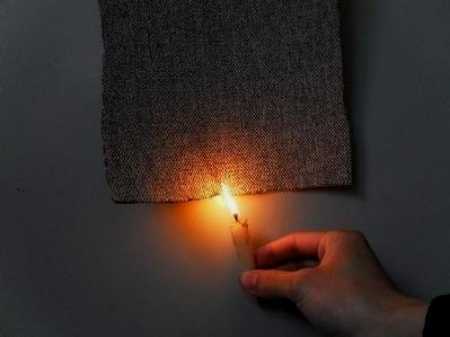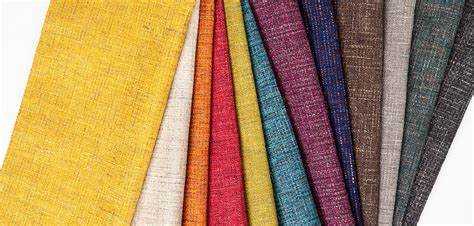Site: Home > News and events 


4 types of common textile flame retardant performance testing methods
According to statistics, about 20% of residential fires are caused by textiles, and more than 50% of deaths are caused by these textile fires. Therefore, imparting flame-retardant functions to textiles is of great significance for eliminating fire hazards, preventing the spread of fire, and reducing the loss of life and property. Of course, the so-called "flame-retardant" does not mean that the flame-retardant textiles will not burn when exposed to a fire source, but that the fabric can reduce its flammability as much as possible in the fire, slow down the rate of spread, and prevent the formation of large The area burns, and it can self-extinguish soon after leaving the flame, no longer burning or smoldering.
Common flame retardant detection methods for textiles include a vertical burning method, the 45° burning method, the horizontal burning method, cigarette, and small flame burning, etc.
1. Vertical combustion method: mainly used for flame retardant detection of clothing textiles, curtains, and other fabrics. This detection method stipulates that the tested sample should be placed vertically (the length of the tested sample is perpendicular to the horizontal line), the combustion source is ignited below the tested sample, and the minimum ignition time, continuous burning time, smoldering time, Flame spread speed, carbonization length (damage length), carbonization area (damaged area) and other indicators related to flame retardant performance.
Common testing standards for vertical combustion method:
GB/T 5455 Textile Burning Performance Test;
GB/T 8745 Burning performance of textiles: Determination of damage length in the vertical direction, flame retardant, and continuous burning time;
16 CFR 1615/1616 Flammability test for children's pajamas.

2. 45° Combustion Method: This detection method stipulates that the tested sample is placed at an angle of 45° (the length of the tested sample is at a 45° angle to the horizontal), and the time required for the tested sample to burn up a certain distance or measure the After the test sample burns, the afterburning, smoldering time, flame spread speed, carbonization length, carbonization area, or the number of times the test sample needs to be exposed to the flame at a certain distance from the lower end of the test sample, etc., are indicators related to flame retardancy.
Common testing standards for 45° combustion method:
GB/T 14644 Burning performance of textiles: Determination of burning rate in 45° direction;
ASTM D 1230 Standard Test Method for Flammability of Clothing Textiles;
16CFR PART 1610 Flammability Test Standard for Clothing Textiles;
CAN/CGSB-4.2 No. 27.5 45° flame burning performance of Canadian textiles.
3. Horizontal combustion method: It is mainly used for testing the combustion performance of children's sleeping bags and blankets. The detection method is to burn the surface of the tested sample with a standardized flame within a specified time, thereby observing the burning rate, damage degree or discoloration of the tested sample, and then classifying and evaluating the tested fabric.
Common testing standards for horizontal combustion method:
CPAI 75 Children's Sleeping Bag Burning Performance Test
ASTM F 1955 Sleeping Bag Flammability Test Method
ASTM D 4151 Test Method for Flammability of Blankets

4. Cigarette and small flame burning: This detection method puts the tested sample on the test substrate, and applies a small flame on the upper or lower part of the tested sample/places a smoking cigarette. Record the occurrence of gradual smoke or flame burning.
Common test standards for cigarettes and small flame combustion:
GB/T 20390.1 Evaluation of the ignitability of textile bedding products Part 1: Cigarettes as an ignition source
GB/T 20390.2 Evaluation of the ignitability of textile bedding products Part 2: Ignition source equivalent to the flame of a match
ISO 12952-1 Evaluation of the ignitability of textile bedding products Part 1: Ignition source: smoking cigarette
ISO 12952-2 Evaluation of the ignitability of textile bedding products Part 2: Ignition source: flame equivalent to a match
TB 117 American upholstered furniture flame retardant performance test standard
At present, countries all over the world attach great importance to the flame-retardant properties of textiles, and some countries even include them in national fire safety regulations. The flame-retardant properties are already a very important indicator in the functional testing of textiles.
Qinsun is a global leading leather&textile testing instruments manufacturer. Focus on developing and manufacturing leather&textile testing equipment. Our leather&textile tester is very popular in HK and UK. In addition, if you purchase our leather&textile testing equipment, we can provide the corresponding pdf manual for free. Welcome to order.
PS: (WLJCDM809)
web:https://www.qinsun-lab.com/
email:info@qinsun-lab.com
email:market@qinsun-lab.com
2021-08-20 12:04
- Related News
What's the difference between a hydraulic oil filter and a regular oil filter?
Interpretation of Paper Tear Strength Standards
What is the significance of the LA abrasion test?
What is a UTM machine used for?
What is the principle of a capillary rheometer?
What is the difference between conical and parallel twin-screw extruders?
What is the ISO standard for color fastness?
What is the use of a roundness tester?
The Role of Dust-Proof Robot Protective Clothing
What is the difference between Taber and Martindale abrasion tests?
